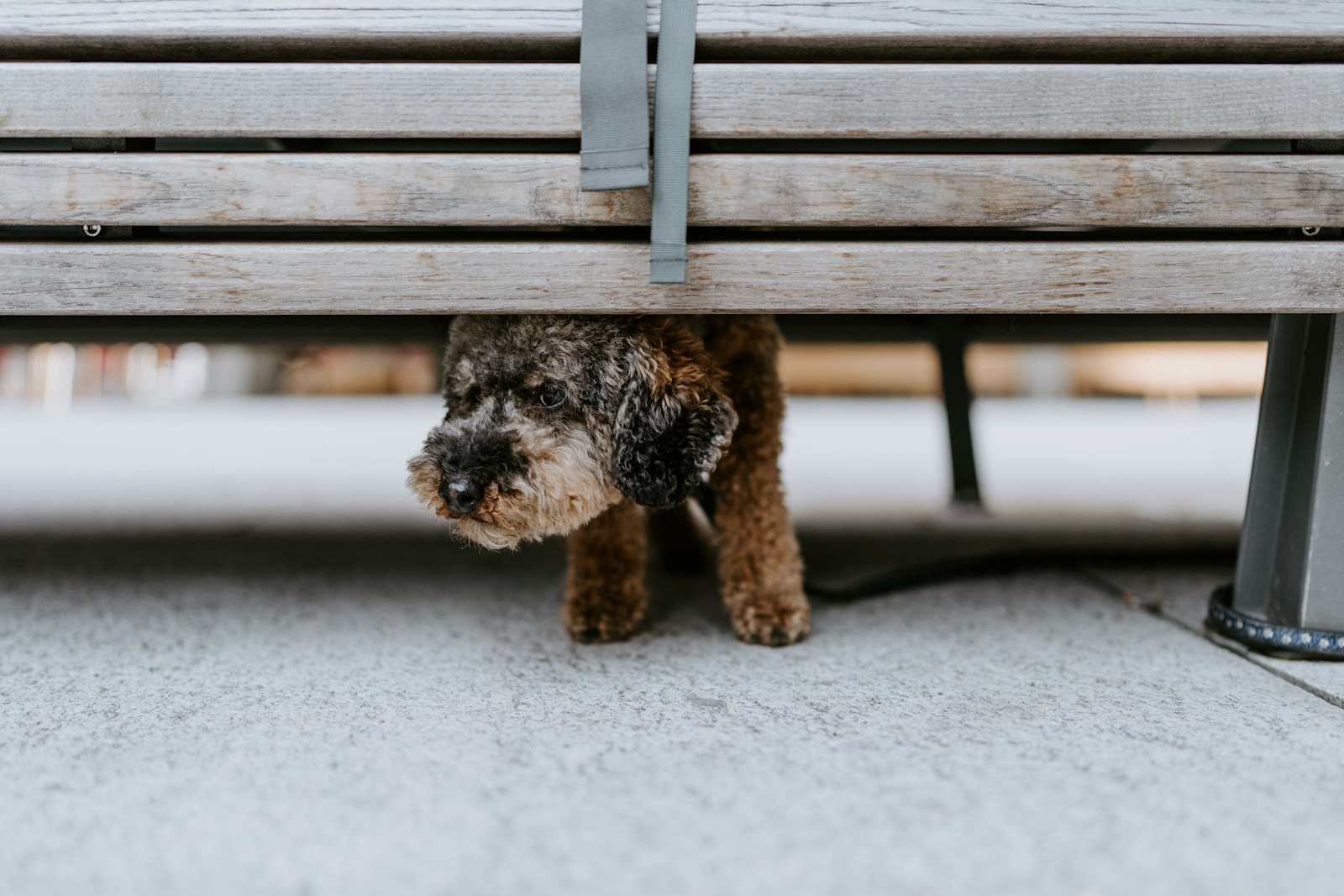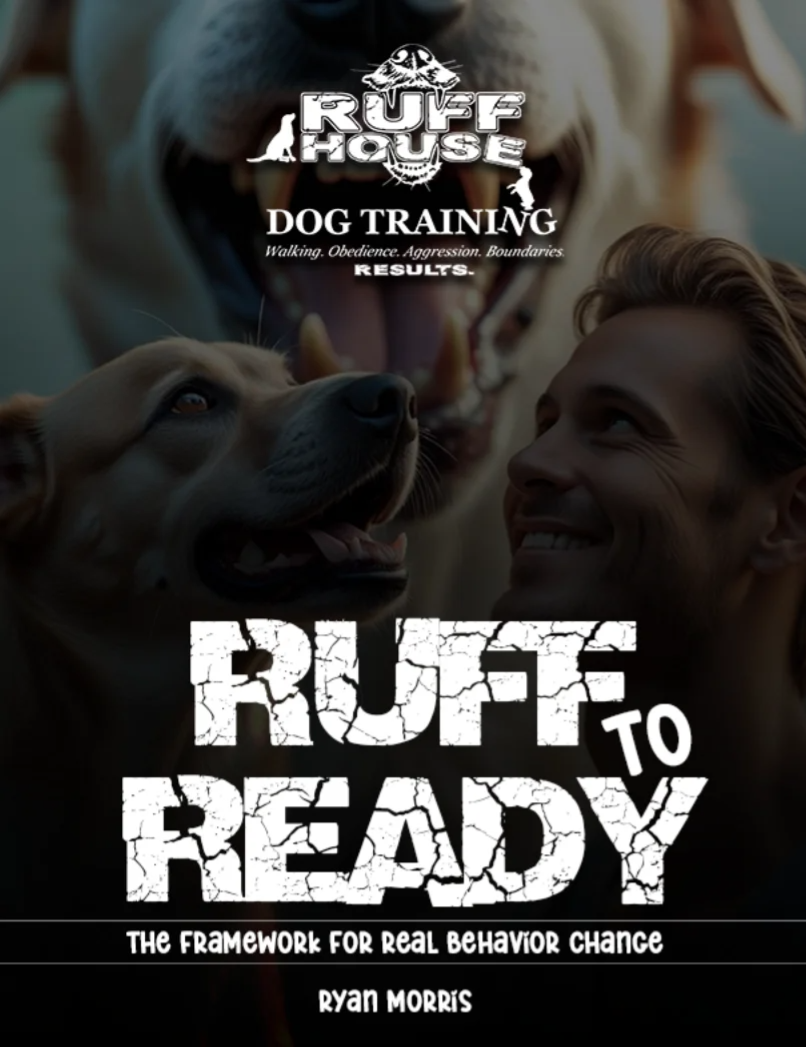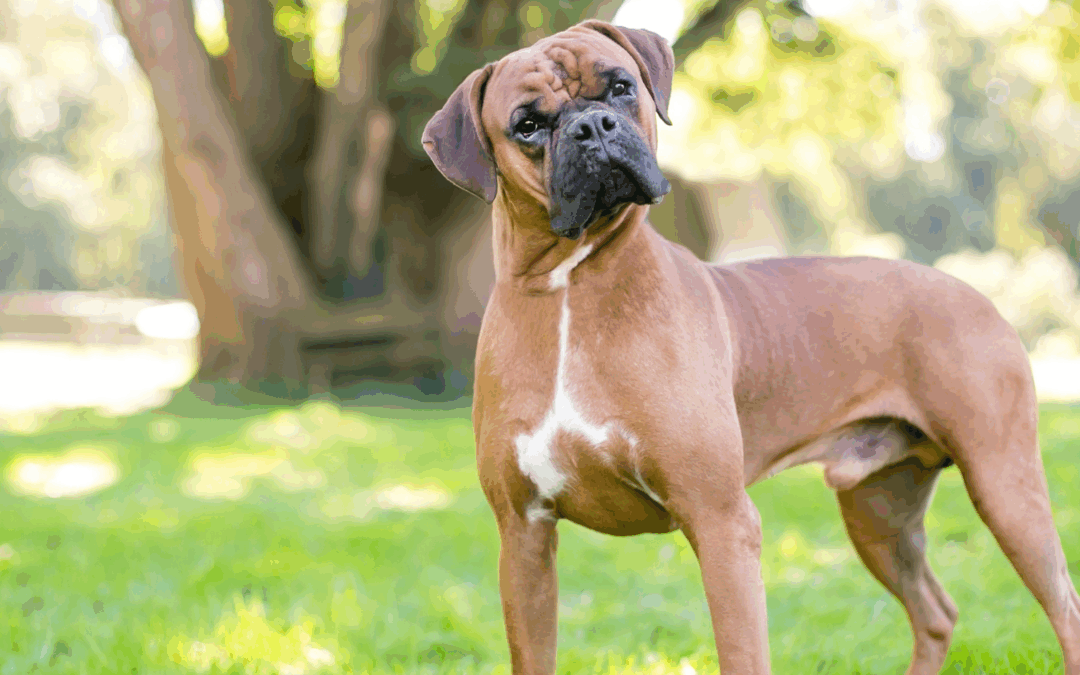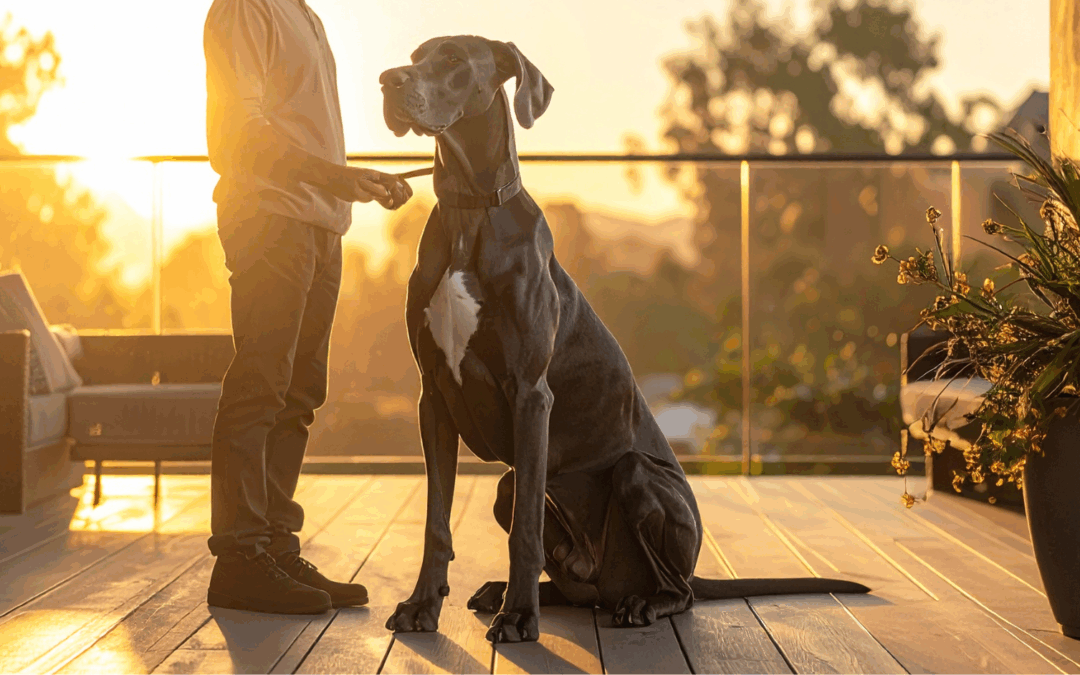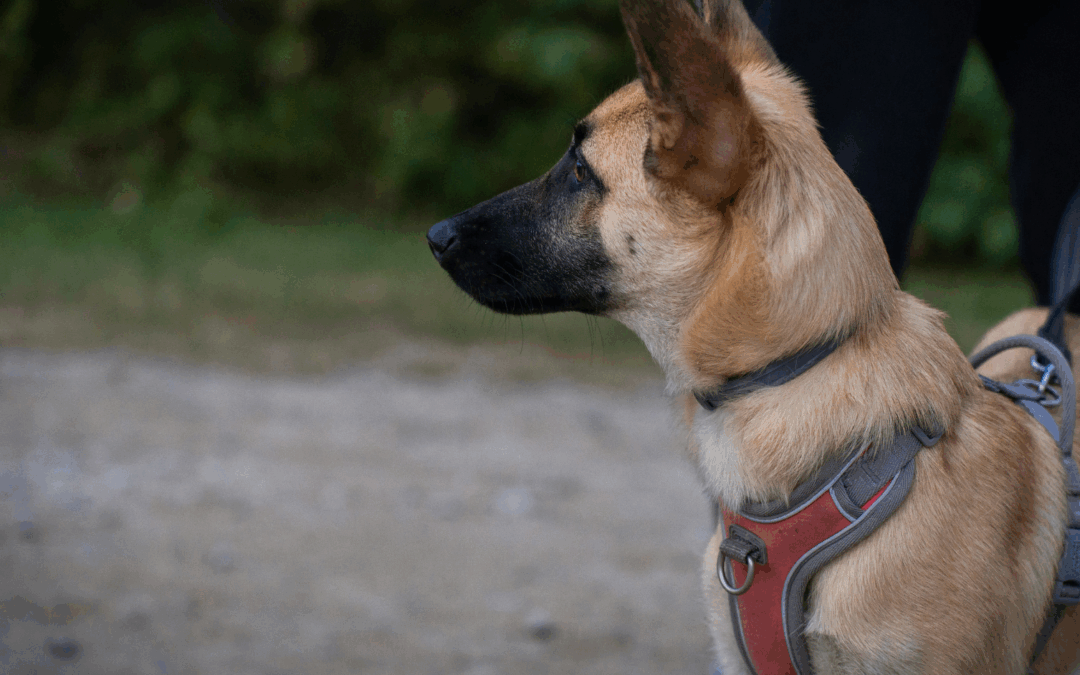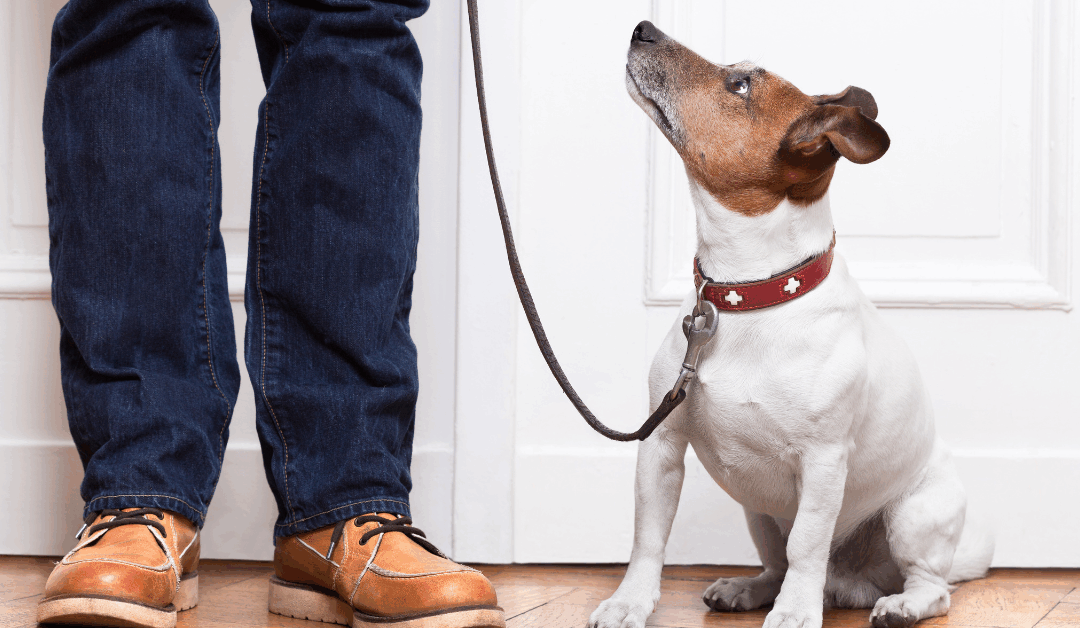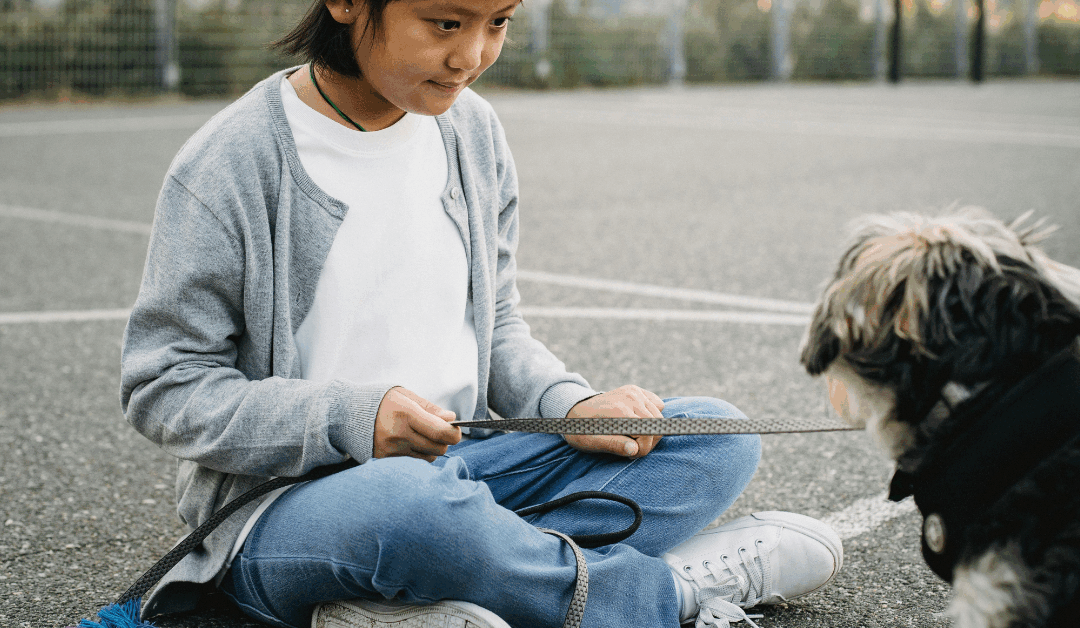Looking for dog separation anxiety training?
Does your dog turn into a destructive tornado the moment you leave the house? Maybe they bark excessively, chew furniture, or have accidents despite being house-trained. These behaviors often signal separation anxiety—a common but treatable condition that affects millions of dogs and their families.
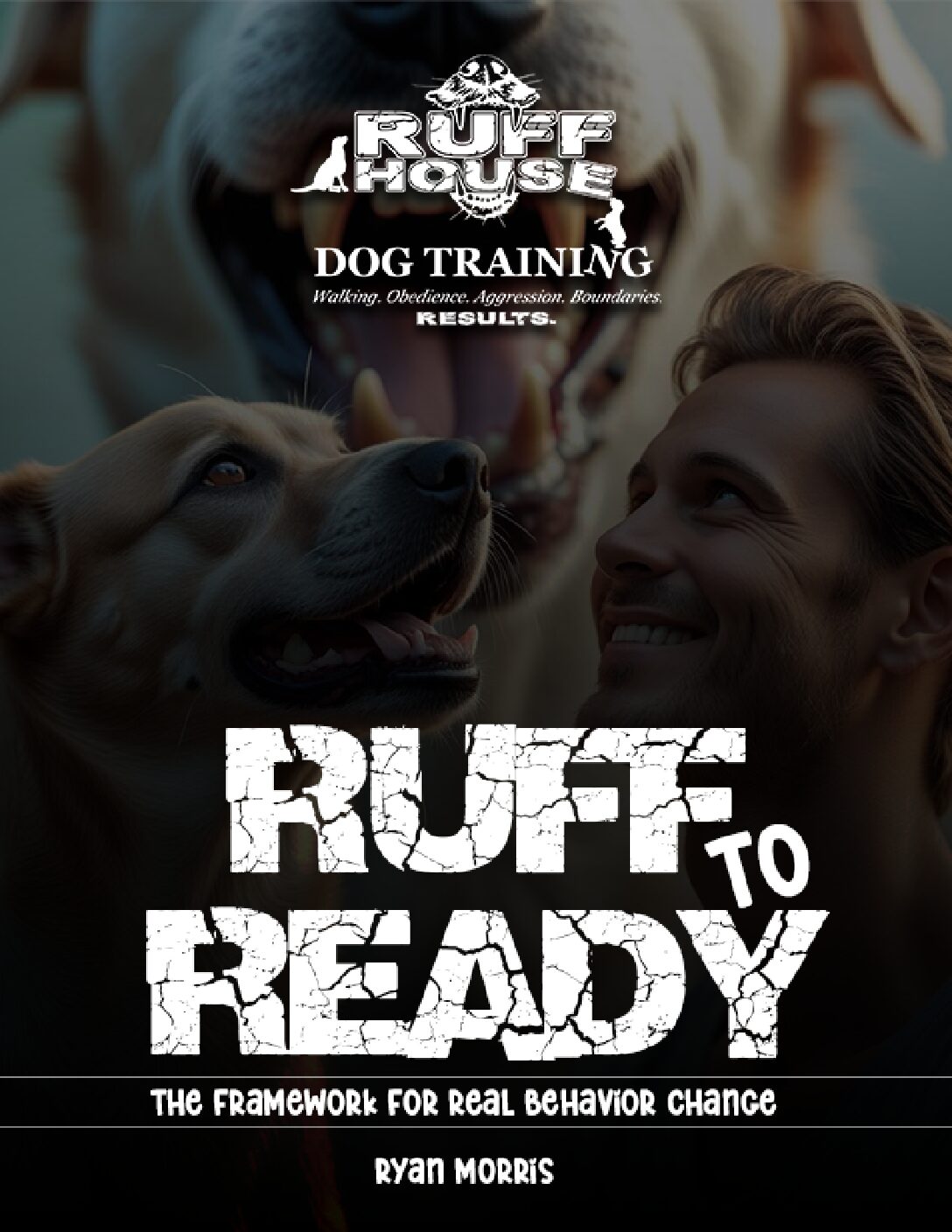
Unlock Real Behavior Change – Download Your Free Guide Now
"*" indicates required fields
Separation anxiety goes beyond typical sadness when you leave. It’s a genuine panic disorder that can make your dog feel like their world is ending every time you walk out the door. The good news? With the right approach and patience, most dogs can learn to feel comfortable being alone.
This comprehensive guide will walk you through everything you need to know about treating your dog’s separation anxiety, from recognizing the signs to implementing a successful training protocol that works at your dog’s pace.
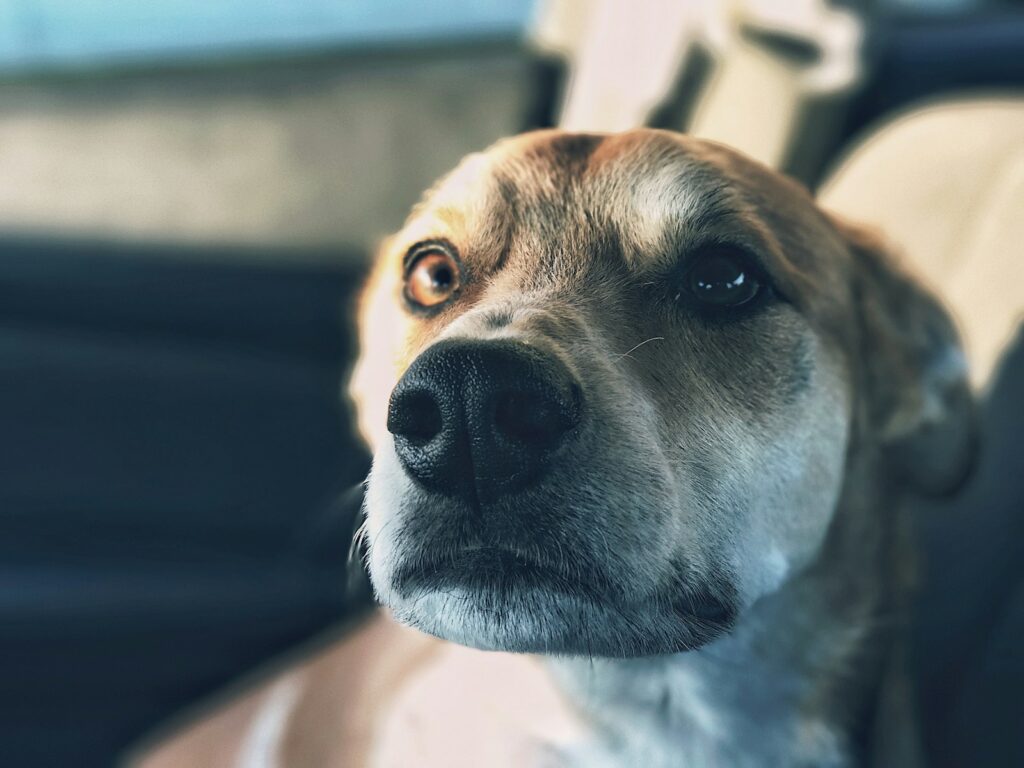
Photo by Jeremiah Higgins on Unsplash
Understanding Dog Separation Anxiety
Separation anxiety is a complex behavior disorder where dogs experience extreme distress when separated from their pet parents or left alone in the house. Unlike regular sadness or boredom, this condition triggers genuine panic attacks that can last for hours.
Many dogs develop separation anxiety after major life changes like moving homes, schedule shifts, or losing a family member. Some rescue dogs arrive with existing anxiety from previous trauma, while others develop it gradually over time.
The key difference between separation anxiety and other behavioral issues lies in the timing. Dogs with separation anxiety typically begin showing distress within minutes of being left alone, and their behavior returns to normal immediately when you return home.
Common Signs and Symptoms
Recognizing separation anxiety early can prevent the condition from worsening and reduce stress for both you and your dog. Watch for these telltale signs:
Destructive behaviors like chewing furniture, scratching doors, or destroying household items—usually focused around exit points like windows and doors, where they last saw you leave.
Excessive barking or howling that begins shortly after your departure and continues for extended periods. Neighbors often report this behavior to pet parents who had no idea their quiet dog was causing disturbances.
Inappropriate elimination even in house-trained dogs. Anxious dogs may urinate or defecate indoors despite having regular bathroom schedules and outdoor access.
Escape attempts including digging, scratching, or trying to break through barriers. Some dogs injure themselves trying to follow their owners or escape confinement.
Physical symptoms such as pacing, drooling, trembling, or destructive scratching that can lead to broken nails or worn paw pads.

Photo by Jerry Kavan on Unsplash
The Science Behind Separation Anxiety Training
Successful separation anxiety training relies on systematic desensitization—a behavior modification technique that gradually reduces your dog’s fear response through controlled exposure. Instead of forcing your dog to endure long periods alone, this method builds confidence through small increments of success.
The training process works by changing your dog’s emotional association with being alone. Rather than viewing your departure as a catastrophic event, your dog learns that alone time can be neutral or even positive.
Certified separation anxiety trainers emphasize that this isn’t about teaching obedience commands—it’s about addressing the underlying emotional distress that drives the problematic behaviors. Most dogs suffering from separation anxiety know they shouldn’t chew the couch, but they can’t control their panic response.
Why Traditional Methods Often Fail
Many well-meaning pet parents try quick fixes that can actually worsen separation anxiety.
Dramatic departures and arrivals can heighten your dog’s emotional state. Making a big fuss when leaving or returning reinforces the idea that your presence is extraordinarily important and your absence is devastating.
Crate training can help some dogs feel secure. Ruff House Dog Training can help you formulate a customized training plan that aims to address separation anxiety, crate training, obedience and much more. Contact us today!
Creating Your Separation Anxiety Training Plan
Effective separation anxiety training requires a structured approach tailored to your dog’s specific needs and current anxiety level. The process typically involves three main phases: initial assessment, systematic desensitization, and gradual independence building.
Crate training can help some dogs feel secure. Ruff House Dog Training can help you formulate a customized training plan that aims to address separation anxiety, crate training, obedience and much more. Contact us today!
Initial Assessment and Preparation
Before beginning any training, conduct an honest evaluation of your dog’s current behavior patterns. Document when symptoms appear, how long they persist, and which triggers seem most problematic.
Consider your dog’s overall stress levels throughout the day. Dogs dealing with multiple stressors—like loud noises, other pets, or health issues—may need additional support before separation anxiety training can be effective.
Create a baseline by recording your dog’s behavior during short departures. Even leaving for just a few minutes can provide valuable information about their anxiety threshold and help establish starting points for training.
Systematic Desensitization Protocol
The core of separation anxiety training involves gradually increasing alone time while keeping your dog below their panic threshold. This process requires patience and consistency, as rushing can undo weeks of progress.
Start with departures so brief they barely register—perhaps just stepping outside for 30 seconds. The goal is to return before your dog shows any signs of distress, creating healthy experiences with being alone.
Slowly increase departure duration based on your dog’s comfort level. Some dogs progress quickly from seconds to minutes, while others need weeks to handle even short absences. Following your dog’s pace prevents setbacks and builds genuine confidence.
Practice departure cues separately from actual leaving. Put on your coat, grab your keys, and then sit back down. This helps desensitize your dog to pre-departure routines that currently trigger anxiety.
Building Balanced Associations
Transform alone time from something scary into something your dog might actually enjoy. Special food toys or puzzle feeders that only appear during departures can create balanced associations with your absence.
High-value treats, interactive toys, or frozen Kongs can keep your dog occupied during initial short departures. However, avoid anything your dog might resource guard or that could become dangerous if destroyed.
Some dogs benefit from having a “safe space” like a comfortable bed in a quiet room, while others prefer access to their favorite window or the entire house. Pay attention to where your dog naturally goes when feeling stressed.
Advanced Training Techniques and Strategies
As your dog becomes more comfortable with basic departures, you can introduce more sophisticated training elements that address specific aspects of separation anxiety.
Managing Departure Routines
Dogs are incredibly observant and often begin showing anxiety the moment they detect departure cues. Your morning coffee, putting on work shoes, or grabbing car keys can trigger anticipatory anxiety long before you actually leave.
Practice these pre-departure cues randomly throughout the day without leaving. Put on your work clothes, then make breakfast. Grab your car keys, then watch television. This helps break the predictive pattern that currently causes stress.
When you do need to leave, keep departures calm and matter-of-fact. Avoid lengthy goodbyes or reassurances that can actually increase your dog’s anxiety by highlighting the significance of your departure.
Exercise and Mental Stimulation
A tired dog is often a calmer dog, but timing matters significantly with separation anxiety training. Intense exercise immediately before departures can sometimes increase arousal and anxiety rather than promoting relaxation.
Instead, provide adequate physical exercise and mental stimulation throughout the day, with a calming routine before departures. A puzzle toy or brief training session can redirect anxious energy into focused activity.
Consider the individual needs of your dog’s breed and energy level. High-energy working breeds may need substantial physical outlets, while others benefit more from mental challenges like scent work or problem-solving games.
Environmental Management
Your dog’s physical environment plays a crucial role in their comfort level during alone time. Some dogs feel more secure with background noise like soft music or television, while others prefer quiet environments.
Natural light can help maintain normal circadian rhythms and reduce stress. However, if your dog becomes more anxious watching activity outside, consider limiting window access during training phases.
Temperature control, comfortable bedding, and access to fresh water all contribute to your dog’s overall well-being during alone time. Small environmental stressors can compound separation anxiety and slow training progress.

When to Seek Professional Help With Ruff House Dog Training
While many pet parents can successfully implement basic separation anxiety training, severe cases often require professional intervention. Recognizing when you need additional support can save time and prevent the condition from worsening.
Working with Certified Separation Anxiety Trainers
Certified separation anxiety trainers specialize in this specific behavioral issue and can provide detailed, customized training protocols. They understand the nuances of different anxiety presentations and can adjust techniques based on your dog’s individual needs.
These professionals can help identify subtle triggers you might miss and provide ongoing support throughout the training process. Many clients find that professional guidance accelerates progress and prevents common mistakes that can set back training.
Look for trainers like Ruff House Dog Training who use science-based methods like the balanced training method, and have specific experience with separation anxiety cases.
Ryan at Ruff House Training strives to teach your dog to develop independence, which can alleviate anxiety, as discussed in the newly released E-Book ‘Ruff to Ready’.
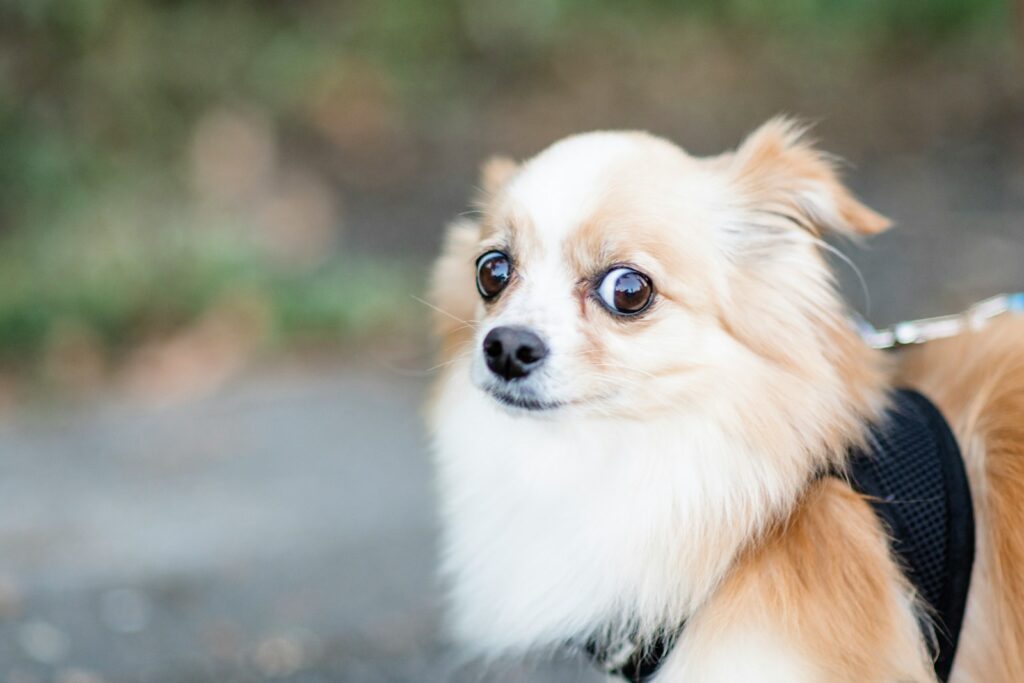
Photo by Michelle Tresemer on Unsplash
Common Challenges and Solutions
Even with the best training plan, most pet parents encounter obstacles during separation anxiety treatment. Understanding common challenges can help you stay committed to the process and adjust strategies as needed.
Dealing with Setbacks
Progress with separation anxiety training rarely follows a straight line. Dogs may have good days and bad days, and life events can temporarily increase anxiety levels. Recognizing that setbacks are normal prevents discouragement and helps maintain long-term success.
When setbacks occur, temporarily reduce your training criteria rather than pushing through. If your dog was comfortable with 30-minute departures but suddenly shows distress at 15 minutes, drop back to their comfort zone and rebuild gradually.
Keep detailed records of your dog’s progress to help identify patterns or triggers that might be causing setbacks. Sometimes seemingly unrelated changes like new construction noise or a family member’s schedule shift can impact anxiety levels.
Managing Multiple Dogs
Households with multiple dogs face unique challenges with separation anxiety training. Some dogs feed off each other’s anxiety, while others find comfort in canine companionship during alone time.
If only one dog has separation anxiety, you might need to separate them during training sessions to prevent the anxious dog from triggering stress in others. Conversely, a calm companion dog can sometimes help reduce anxiety in the affected dog.
Training sessions may need to account for pack dynamics and ensure that all dogs receive appropriate attention and mental stimulation. Professional guidance becomes especially valuable in multi-dog households with separation anxiety issues.
Balancing Training with Real Life
One of the biggest challenges in separation anxiety training is managing the gap between your dog’s current comfort level and your real-world schedule needs. If your dog can only handle 10 minutes alone but you need to work eight-hour days, creative solutions become necessary.
Consider temporary alternatives like dog sitters, doggy daycare, or having a family member stay with your dog during the training process. Pushing your dog beyond their current limits can undo weeks of progress and increase overall anxiety levels.
Some families rearrange schedules temporarily to accommodate training needs, working from home more often or taking turns staying with the dog. While inconvenient, this investment in proper training typically pays off with long-term success.
Long-Term Success and Maintenance
Successfully treating separation anxiety requires ongoing commitment and occasional maintenance sessions. Even after your dog becomes comfortable being alone, life changes can trigger temporary setbacks that require additional support.
Maintaining Progress
Once your dog can handle your typical alone time comfortably, continue practicing departures regularly to maintain their confidence. Dogs who rarely experience alone time after successful training sometimes regress when circumstances require longer departures.
Periodically practice departure cues and short absences even when you don’t need to leave. This keeps the skills fresh and prevents anxiety from rebuilding around your departure routines.
Continue providing associations with alone time through special toys or treats. Many dogs learn to genuinely enjoy their solo time when it consistently includes enjoyable activities.
Preparing for Life Changes
Major life transitions like moving homes, adding family members, or changing work schedules can temporarily increase separation anxiety in previously successful dogs. Anticipating these challenges allows you to provide additional support during adjustment periods.
When possible, gradually introduce changes rather than implementing them all at once. If you’re returning to office work after working from home, slowly increase departure duration over several weeks rather than suddenly leaving for full days.
Keep your training tools and techniques fresh in your memory. Even dogs who have been comfortable alone for months might need refresher training sessions during stressful life transitions.
Building Confidence Beyond Separation Anxiety
Successful separation anxiety training often has positive effects beyond just comfortable alone time. Dogs who learn to manage their anxiety typically become more confident in other situations and develop stronger problem-solving skills.
The systematic desensitization process teaches dogs that they can handle challenging situations, building resilience that transfers to other anxiety triggers. Many pet parents notice improvements in their dog’s overall stress management and adaptability.
The bond between you and your dog often strengthens through the training process as you learn to read their signals more accurately and provide appropriate support. This improved communication benefits your relationship in many areas beyond separation anxiety.
Remember that treating separation anxiety is a marathon, not a sprint. The time and effort invested in proper training creates lasting behavioral changes that improve quality of life for both you and your dog. With patience, consistency, and the right approach, most dogs can learn to feel comfortable and secure during alone time.
Frequently Asked Questions
How long does separation anxiety training typically take?
The timeline for separation anxiety training varies dramatically depending on your dog’s anxiety severity, consistency of training, and individual temperament. Some dogs show improvement within a few weeks, while severe cases may require several months of consistent work. Most dogs begin showing progress within 4-6 weeks of systematic training, but full comfort with longer departures often takes 3-6 months.
Can puppies develop separation anxiety, and is it easier to treat?
Puppies can definitely develop separation anxiety, and early intervention is crucial. Young dogs are often more adaptable to training, but they also haven’t developed the emotional maturity to handle stress independently. Puppy separation anxiety training focuses heavily on building confidence and independence while ensuring they don’t develop negative associations with alone time.
Will crate training help or hurt a dog with separation anxiety?
Crate training can be beneficial for some dogs with separation anxiety by providing a secure, den-like space. However, forcing anxious dogs into crates can increase panic and lead to injuries from escape attempts. If your dog already shows crate anxiety, work on healthy crate associations separately from departure training, or consider alternative containment methods like baby gates or dog-proofed rooms.
Is it possible to completely cure separation anxiety?
While many dogs learn to be completely comfortable alone, “cure” might not be the right term for separation anxiety. It’s more accurate to say that dogs can learn to manage their anxiety effectively and develop coping skills for alone time. Most successfully trained dogs live normal lives without separation-related distress, though they may need occasional maintenance training during stressful life changes.
Should I get another dog to keep my anxious dog company?
Adding a second dog is rarely an effective solution for separation anxiety and can sometimes make the problem worse. Dogs with separation anxiety are specifically bonded to their human family members, not just seeking any companionship. Additionally, the anxious dog might transfer their attachment to the new dog, creating more complex behavioral issues. Focus on helping your current dog develop independence before considering adding to your family.
Take the First Step Toward Peaceful Departures With Dog Separation Anxiety Training
Separation anxiety can feel overwhelming for both you and your dog, but remember that this condition is highly treatable with the right approach and patience. Every small step forward builds your dog’s confidence and brings you closer to stress-free departures.
Start with tiny victories—even 30 seconds of calm alone time is progress worth celebrating. Document your dog’s journey, stay consistent with your training protocol, and don’t hesitate to seek professional help when needed. The investment in proper separation anxiety training pays dividends in improved quality of life for your entire family.
If you’re feeling overwhelmed by your dog’s separation anxiety or need guidance creating an effective training plan, consider consulting with a certified separation anxiety trainer who can provide personalized support for your specific situation. With professional guidance and consistent effort, you and your dog can overcome separation anxiety and enjoy a more relaxed, harmonious relationship.
